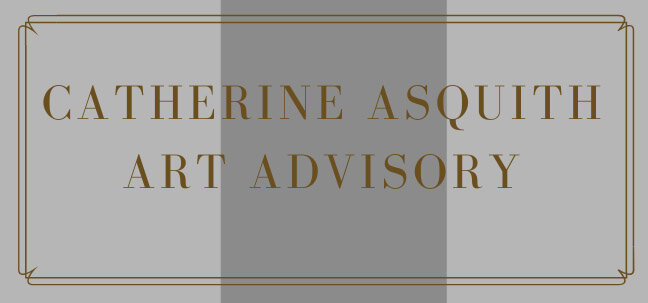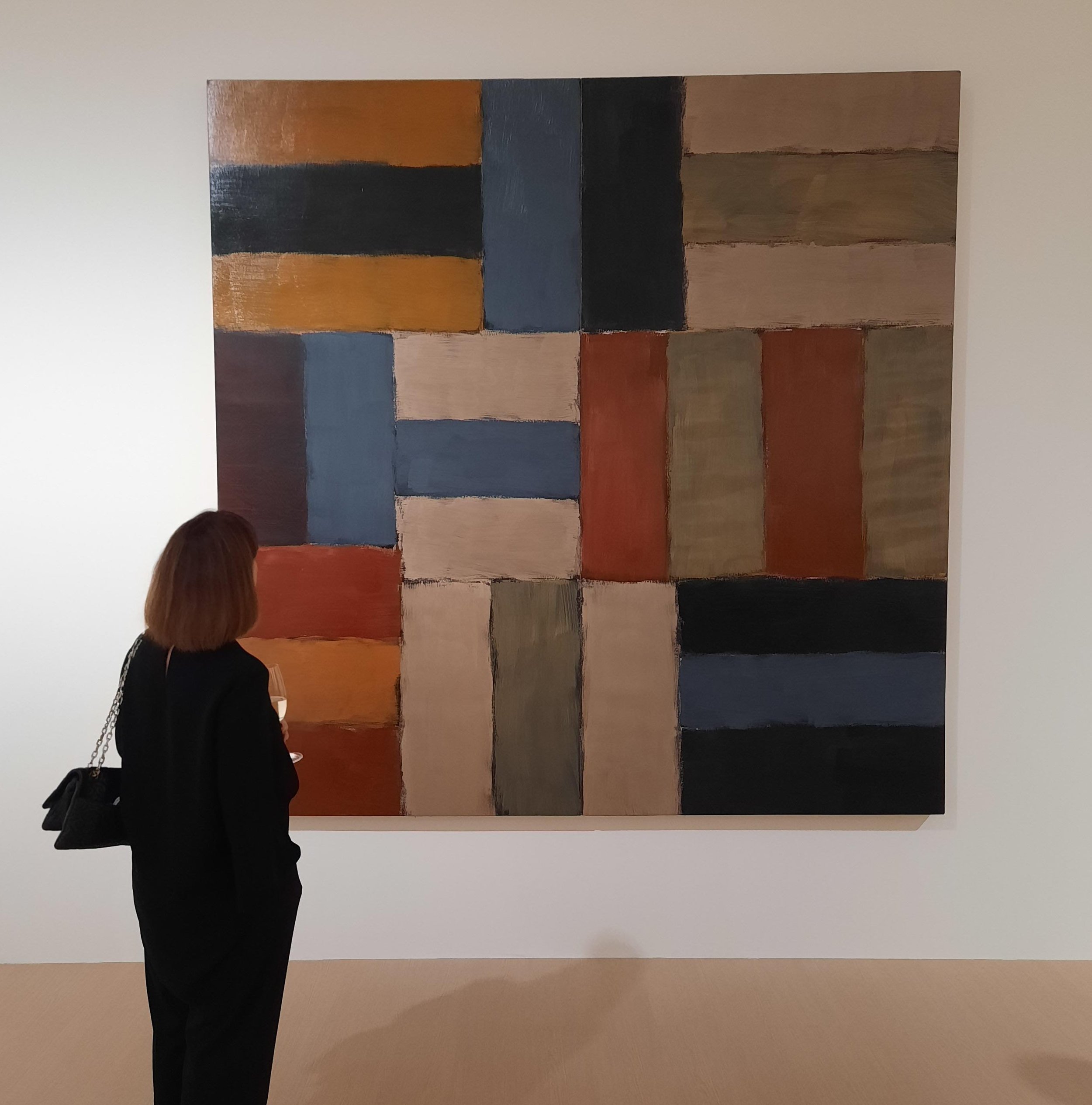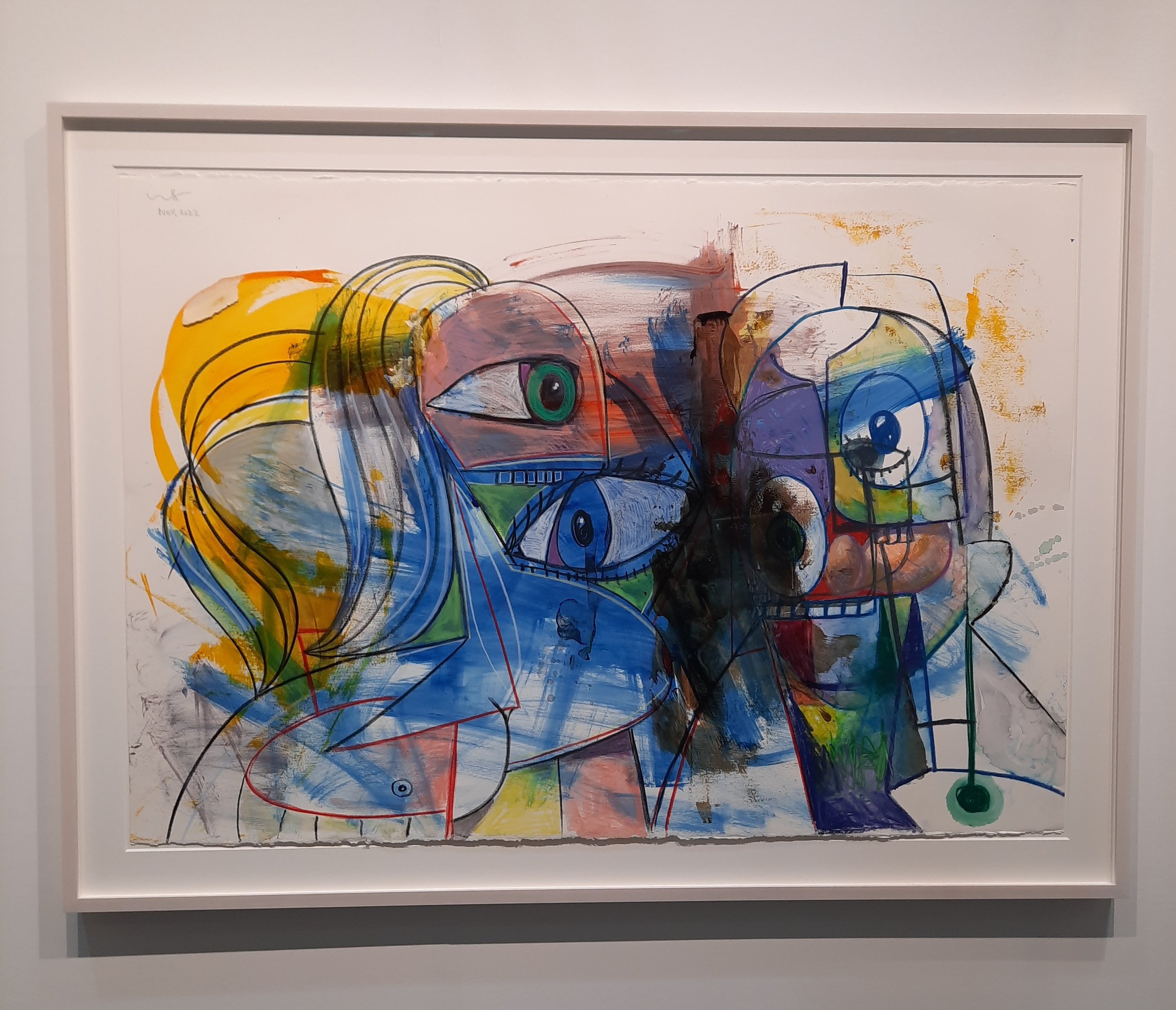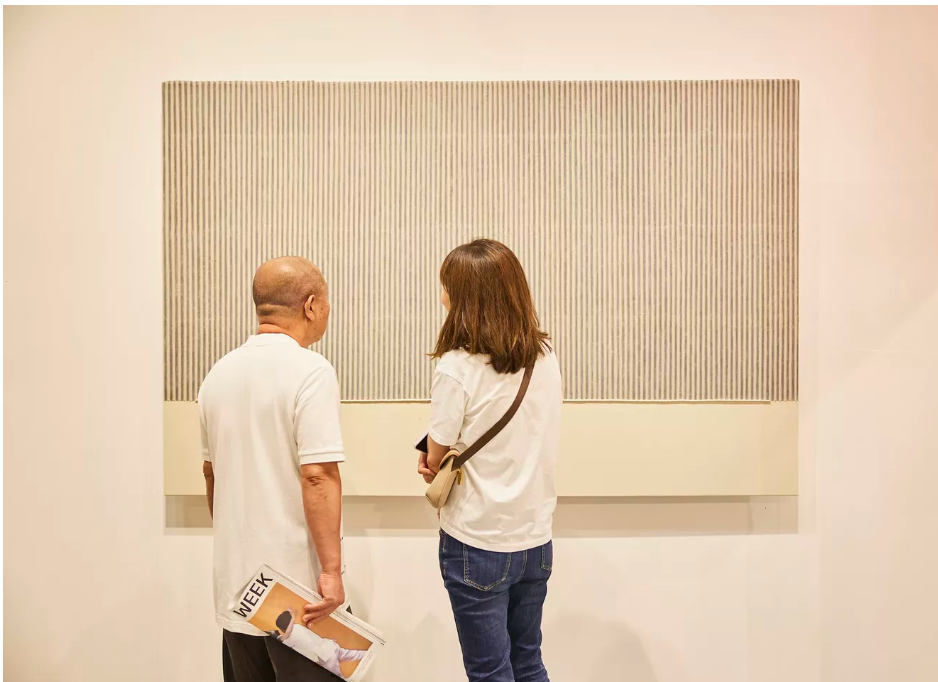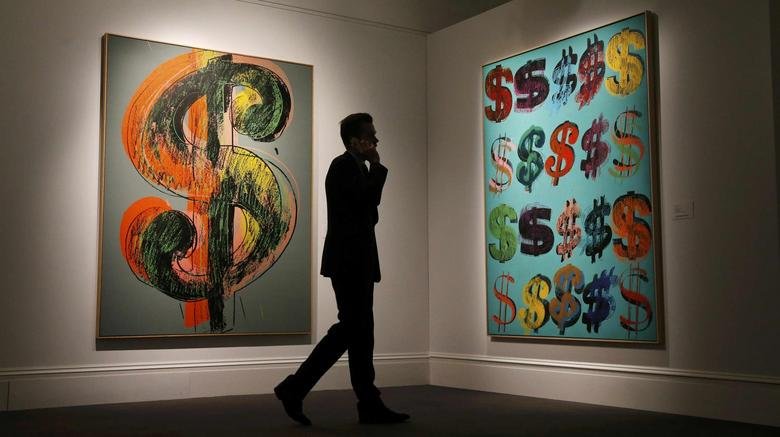It was with great anticipation that the 242 exhibiting galleries from Asia-Pacific, Europe, the America’s, Africa and the Middle East welcomed a tsunami of VIP visitors to the Hong Kong Convention and Exhibition Centre on a uniquely sunny Tuesday afternoon. The mood of both the galleries and VIP guests was one of cautious excitement about how the coming days would unfold, with galleries variously describing the two dedicated VIP days as quieter than in 2023. Galleries reported fewer spontaneous purchasing decisions and a slower more considered approach being adopted by collectors in the opening hours. Gone were the frenzied opening hours of transaction madness, this time, while busy, collectors adopted a more thoughtful approach, with various galleries reporting remarkable sales and notable transactions by the time the fair closed.
Hauser & Wirth’s notable sales included a Willem de Kooning work and a Philip Guston painting selling for US$9 million and US$8.5 million respectively. Lehmann Maupin sold several pieces to Asian buyers, including pieces by Do Hu Suh and Kim Yun Shin. This reflects a trend noticed throughout the week of a strong demand for Asian artists, particularly from Korea and Taiwan. The artist Yayoi Kusama remains much in demand with Victoria Miro selling three of the artist’s works for a total of US$11 million, including a renowned ‘Infinity Mirror Room’. Other artists of note were Lee Jinju at Arario Gallery, Ha Chong-Hyun at Tina Kim Gallery, Kang Kang Hoon at Johyun Gallery, Tsherin Sherpa at Rossi & Rossi and Chen Zhen at Galleria Continua.
Of note were the number of artists working with non-traditional materials with textiles including lace, fabrics and thread being adopted as their medium of choice. Works in painted bronze and metals such as copper also were noted while there seemed to be fewer photographic and multi- media works than in previous years. These formats seem to continue to be a difficult ‘sell’ for many collectors in the region.
The Encounter’s section, curated superbly once again by Alexi Glass-Kantor included large scale installation works by Yoan Capote and Candida Hoffer (Ben Brown Fine Arts), Li Wei (Tang Contemporary) and Daniel Boyd’s (Kukje Gallery and Station) off site installation, ‘Doan’ attracted great interest from visitors to Pacific Place, Admiralty. Boyd’s international star continues to rise off the back of his recent first solo show with Marian Goodman Gallery in New York.
Hong Kong’s commercial gallery scene was alive with exceptional exhibitions. The highlights being Andy Warhol and Jean-Michel Basquiat at Gagosian, Glenn Ligon at the stunning Hauser & Wirth gallery and Louise Giovanelli at White Cube. All beautiful shows in their own right.
Additional standout events included a visit to M+ to view the exceptional Uli Sigg collection, a private viewing of Ben Brown Fine Art’s exhibition, ‘Celestial Mechanics: Form and Future in the Work of Gerhard Richter and Sean Scully’ at The Asia Society and brunch at Pearl Lam to view ‘The Night’, Maggi Hambling’s first gallery exhibition in Hong Kong since her museum retrospectives in Beijing and Guangzhou in 2019.
The auction market and private treaty sale sectors reported good sales for high quality works, with estimates set to reflect the cautious economic environment. Sotheby’s auction this week will be a key indicator of the mood of the market but Phillip’s steady results from their Friday afternoon sale could be read as an early sign of quiet confidence in the secondary market.
With collectors jetting into Hong Kong from around the world, there were a noticeable number from the region, including mainland China, Korea and Taiwan as well as Europe and the UK. With the strength of the quality of work emanating from artists in East Asia at the moment, it is no surprise that collectors are keen to develop their knowledge and collections in this area. Of note however, there seemed to be fewer Australian collectors than in previous years.
With visitor numbers exceeding 75,000 across all five days of the fair, Art Basel Hong Kong in 2024 re-enforces Hong Kong’s regional and global prominence as being the second largest art market in the world, after New York.
P.S. Visit our Instagram for a further visual appreciation of our sojourn to Hong Kong.
©Angeline Collings
All images are original and taken by the author(s)
Images:
Lee Jinju at Arario Gallery
Ha Chong-Hyun @ Tina Kim Gallery
Tsherin Sherpa at Rossi & Rossi
Chen Zhen at Galleria Continua.
Louise Giovanelli @ White Cube Gallery (exhibition)
Sean Scully @ Ben Brown Fine Arts exhibition @ Asia Society HK
